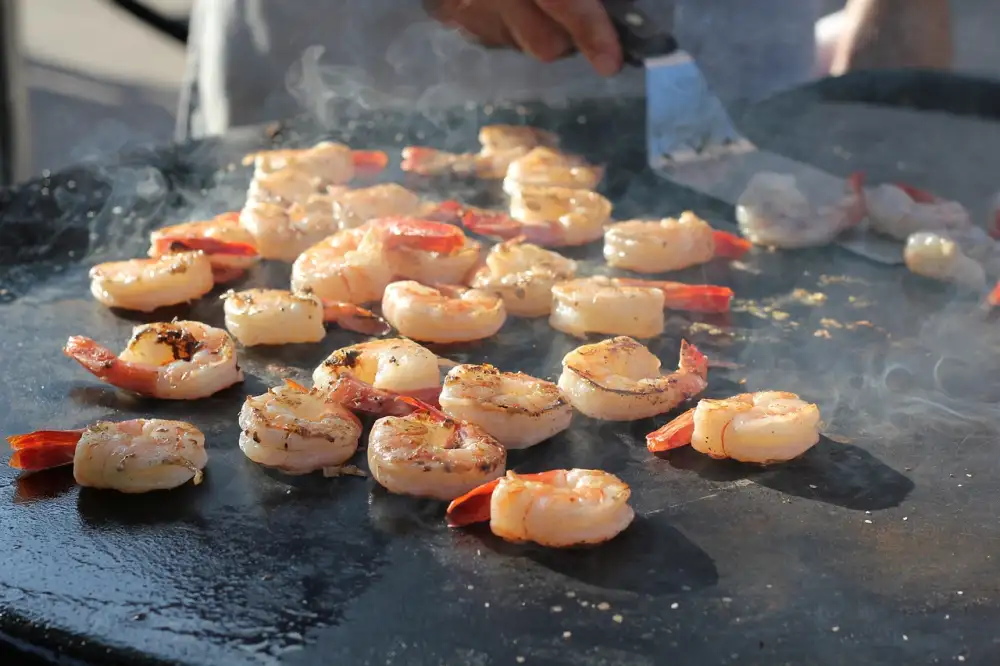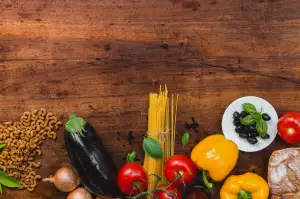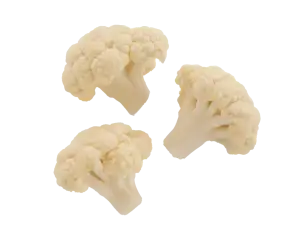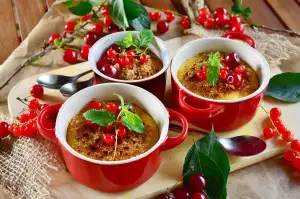Master the Art of Cooking Frozen Shrimp: A Step-by-Step Guide to Perfectly Prepare Your Seafood

- Step 1: Thawing the Shrimp
- Step 2: Preparing the Shrimp for Cooking
- Step 3: Choosing the Cooking Method
- Method 1: Boiling Frozen Shrimp
- Method 2: Sautéing Frozen Shrimp
- Method 3: Baking Frozen Shrimp
- Method 4: Grilling Frozen Shrimp
- Step 4: Seasoning and Flavoring Options
- Step 5: Cooking the Shrimp
- Step 6: Checking for Doneness
Frozen shrimp is a versatile ingredient that can be a lifesaver in the kitchen. With its long shelf life and easy accessibility, it offers convenience without compromising on taste or quality. Whether you're planning a quick weeknight meal or hosting a dinner party, having frozen shrimp on hand allows you to whip up delicious seafood dishes in no time. In this step-by-step guide, we will explore the best methods to perfectly prepare your frozen shrimp, ensuring that every bite is packed with flavor and succulence. So let's dive in and master the art of cooking frozen shrimp!
Step 1: Thawing the Shrimp
Thawing frozen shrimp is a crucial step in preparing them for cooking. There are two safe methods to thaw shrimp: in the refrigerator or under cold running water.
To thaw in the refrigerator, simply transfer the frozen shrimp from the freezer to a plate or bowl and place it in the fridge overnight. This slow thawing method ensures that the shrimp defrost evenly and maintain their quality.
If you're short on time, you can use the cold running water method. Place the frozen shrimp in a colander and run cold water over them, making sure to continuously move and separate them with your hands. Within minutes, they will be fully thawed and ready for cooking.
Avoid using warm water or leaving shrimp at room temperature for extended periods as this can promote bacterial growth. Thawed shrimp should be used immediately or stored in the refrigerator for up to two days. Now that your shrimp are thawed, let's move on to preparing them for cooking.
Step 2: Preparing the Shrimp for Cooking
Before you start cooking your frozen shrimp, it's important to properly prepare them. Start by rinsing the shrimp under cold water to remove any ice crystals or excess ice. This will help ensure even cooking.
Next, pat the shrimp dry with paper towels. Removing excess moisture will prevent the shrimp from becoming watery when cooked.
If your frozen shrimp still have shells on, you can choose to peel them before or after cooking. Peeling before cooking allows the flavors to penetrate the shrimp better, but it can also result in a slightly drier texture. On the other hand, peeling after cooking may retain more moisture but can be messier.
Regardless of when you choose to peel them, make a shallow cut along the back of each shrimp using a sharp knife or kitchen shears. This will allow for easier removal of the shell and deveining if desired.
Once your shrimp are rinsed, dried, and peeled (if desired), they are now ready to be cooked using your preferred method.
Step 3: Choosing the Cooking Method
Now that your shrimp is thawed and ready to be cooked, it's time to decide which method you want to use. There are several options available, each with its own unique benefits.
Method 1: Boiling Frozen Shrimp
Boiling is a quick and easy way to cook frozen shrimp. Simply bring a pot of water to a boil, add the shrimp, and cook for about 2-3 minutes until they turn pink and opaque. This method is great for dishes like shrimp cocktail or pasta.
Method 2: Sautéing Frozen Shrimp
Sautéing frozen shrimp in a pan with some oil or butter allows for a delicious sear on the outside while keeping the inside tender. Cook them over medium-high heat for about 4-5 minutes, flipping halfway through. This method works well for stir-fries or shrimp tacos.
Method 3: Baking Frozen Shrimp
Baking frozen shrimp is a healthier option that requires minimal effort. Preheat your oven to 400°F (200°C), place the shrimp on a baking sheet, and cook for about 8-10 minutes until they are pink and firm. This method is perfect for dishes like garlic butter shrimp or shrimp scampi.
Method 4: Grilling Frozen Shrimp
Grilling adds a smoky flavor to your frozen shrimp and gives them a slightly charred texture. Preheat your grill to medium-high heat, thread the thawed shrimp onto skewers, and grill for about 2-3 minutes per side until they are opaque throughout. This method is ideal for summer barbecues or seafood kebabs.
Choose the cooking method that best suits your taste preferences and the dish you're preparing. Each method offers its own unique flavors and textures, so don't be afraid to experiment!
Method 1: Boiling Frozen Shrimp
Boiling is a quick and easy method to cook frozen shrimp. Here's how to do it:
1. Fill a pot with enough water to fully submerge the shrimp.
2. Add salt or any desired seasonings to the water for added flavor.
3. Bring the water to a rolling boil over high heat.
4. Once boiling, carefully add the frozen shrimp to the pot.
5. Stir occasionally to ensure even cooking and prevent sticking.
6. Boil the shrimp for about 3-5 minutes or until they turn pink and opaque.
7. Using a slotted spoon, remove the cooked shrimp from the pot and transfer them to a plate lined with paper towels to drain excess water.
Boiled frozen shrimp can be enjoyed on their own, added to salads, pasta dishes, or used in tacos or stir-fries. The boiling method retains the natural sweetness of the shrimp while ensuring they are fully cooked and safe to eat.
Method 2: Sautéing Frozen Shrimp
Sautéing is a quick and flavorful way to cook frozen shrimp. Here's how to do it:
1. Heat a tablespoon of oil or butter in a skillet over medium-high heat.
2. Once the oil is hot, add the frozen shrimp in a single layer.
3. Cook the shrimp for 2-3 minutes on one side until they start to turn pink and opaque.
4. Flip the shrimp over using tongs or a spatula and cook for an additional 2-3 minutes on the other side.
5. Add any desired seasonings, such as garlic, lemon juice, or herbs, during the last minute of cooking.
6. Remove the shrimp from the heat and serve immediately.
Sautéed frozen shrimp are delicious served on their own as an appetizer or can be added to pasta dishes, stir-fries, or salads for a protein-packed meal. Enjoy!
Method 3: Baking Frozen Shrimp
Baking frozen shrimp is a simple and hassle-free method that results in juicy and flavorful seafood. To bake frozen shrimp, preheat your oven to 400°F (200°C). Place the thawed shrimp on a baking sheet lined with parchment paper, ensuring they are evenly spaced. Drizzle olive oil over the shrimp and season with salt, pepper, and any other desired spices or herbs. Toss the shrimp gently to coat them thoroughly.
Next, place the baking sheet in the preheated oven and bake for approximately 10-12 minutes or until the shrimp turn pink and opaque. Be careful not to overcook them as it can lead to rubbery texture. Once done, remove from the oven and let them cool for a few minutes before serving.
Baked frozen shrimp can be enjoyed as an appetizer, added to pasta dishes, salads, or even used as a topping for pizzas. The baking method retains the natural sweetness of the shrimp while infusing it with delicious flavors. So go ahead and try this easy technique to elevate your cooking skills and savor perfectly cooked frozen shrimp every time!
Method 4: Grilling Frozen Shrimp
Grilling frozen shrimp is a fantastic way to infuse smoky flavors into your seafood. Here's how to do it:
1. Preheat your grill to medium-high heat.
2. Remove the shrimp from the packaging and place them on a clean, oiled grill grate.
3. Cook the shrimp for about 2-3 minutes per side, or until they turn pink and opaque.
4. Use tongs to flip the shrimp halfway through cooking.
5. Baste the shrimp with your favorite marinade or brush them with melted butter for added flavor.
6. Keep a close eye on the shrimp to prevent overcooking, as they can quickly become rubbery.
7. Once done, remove the shrimp from the grill and let them rest for a few minutes before serving.
Grilled frozen shrimp pairs well with citrus-based sauces or served over a bed of fresh greens for a light summer salad. Enjoy this delicious and easy grilling method that will elevate your frozen shrimp to new heights of flavor!
Step 4: Seasoning and Flavoring Options
Now that your shrimp is thawed and prepared, it's time to enhance its flavor with various seasoning options. You can go for classic flavors like garlic, lemon, and butter, or get creative with spices like paprika, cayenne pepper, or Cajun seasoning. For a tangy twist, try marinating the shrimp in a mixture of lime juice and cilantro. Don't forget to add a pinch of salt and pepper to bring out the natural flavors. Experiment with different combinations until you find your favorite seasoning blend. Remember, the key is to enhance the taste without overpowering the delicate flavor of the shrimp.
Step 5: Cooking the Shrimp
Once your shrimp is thawed and prepared, it's time to cook them to perfection. There are several cooking methods you can choose from, depending on your preference and the dish you're preparing. Let's explore each method in detail.
Method 1: Boiling Frozen Shrimp
To boil frozen shrimp, bring a pot of water to a rolling boil. Add the shrimp and cook for about 2-3 minutes until they turn pink and opaque. Be careful not to overcook them as they can become rubbery.
Method 2: Sautéing Frozen Shrimp
For sautéing, heat a skillet with some oil or butter over medium-high heat. Add the shrimp and cook for about 2-3 minutes per side until they are pink and slightly firm.
Method 3: Baking Frozen Shrimp
To bake frozen shrimp, preheat your oven to 400°F (200°C). Place the shrimp on a baking sheet lined with parchment paper and bake for about 8-10 minutes until they are pink and cooked through.
Method 4: Grilling Frozen Shrimp
If you prefer grilling, preheat your grill to medium-high heat. Skewer the shrimp or use a grill basket to prevent them from falling through the grates. Grill for about 2-3 minutes per side until they are pink and slightly charred.
Choose the cooking method that suits your taste and recipe requirements. Remember to adjust cooking times based on the size of your shrimp. Now that you know how to cook frozen shrimp, let's move on to step six - checking for doneness.
Note: It's important to handle raw seafood with care and maintain proper hygiene throughout the cooking process.
Step 6: Checking for Doneness
Once you have cooked the frozen shrimp using your chosen method, it is important to check for doneness to ensure they are cooked through and safe to eat. Overcooking can result in rubbery and tough shrimp, while undercooking can lead to potential health risks.
To check if the shrimp are done, look for signs of a pinkish color throughout the flesh. The exterior should be opaque and firm to the touch. If using a cooking method that involves boiling or sautéing, the shrimp will usually float to the surface when fully cooked.
Another reliable way to check for doneness is by cutting into one of the larger shrimp. The flesh should be white and opaque all the way through, with no translucent or raw-looking areas.
It is important not to overcook the shrimp as they can become dry and lose their natural sweetness. Keep in mind that cooking times may vary depending on the size of the shrimp and the cooking method used. It is always better to slightly undercook them rather than overcook them, as you can always cook them a little longer if needed.
By following these steps and checking for doneness properly, you can ensure that your frozen shrimp are perfectly cooked every time. Enjoy your delicious seafood creation!
Now that you have mastered the art of cooking frozen shrimp, it's time to enjoy the fruits of your labor. With the convenience of frozen shrimp, you can elevate your cooking skills and create delectable seafood dishes in no time.
Whether you choose to boil, sauté, bake, or grill your frozen shrimp, each method offers its own unique flavors and textures. Experiment with different seasoning and flavoring options to enhance the taste of your shrimp.
Remember to cook your shrimp until they are pink and opaque, ensuring they are fully cooked and safe to eat. Overcooking can result in tough and rubbery shrimp, so be sure to keep an eye on them during the cooking process.
Once your shrimp is cooked to perfection, serve it as a main dish or incorporate it into pasta dishes, salads, or tacos. The possibilities are endless!
So next time you find yourself with a bag of frozen shrimp in your freezer, don't hesitate to thaw them out and get creative in the kitchen. With these step-by-step instructions, you'll be able to prepare delicious cooked frozen shrimp that will impress even the most discerning seafood lovers. Enjoy!
Published: 21. 11. 2023
Category: Food



